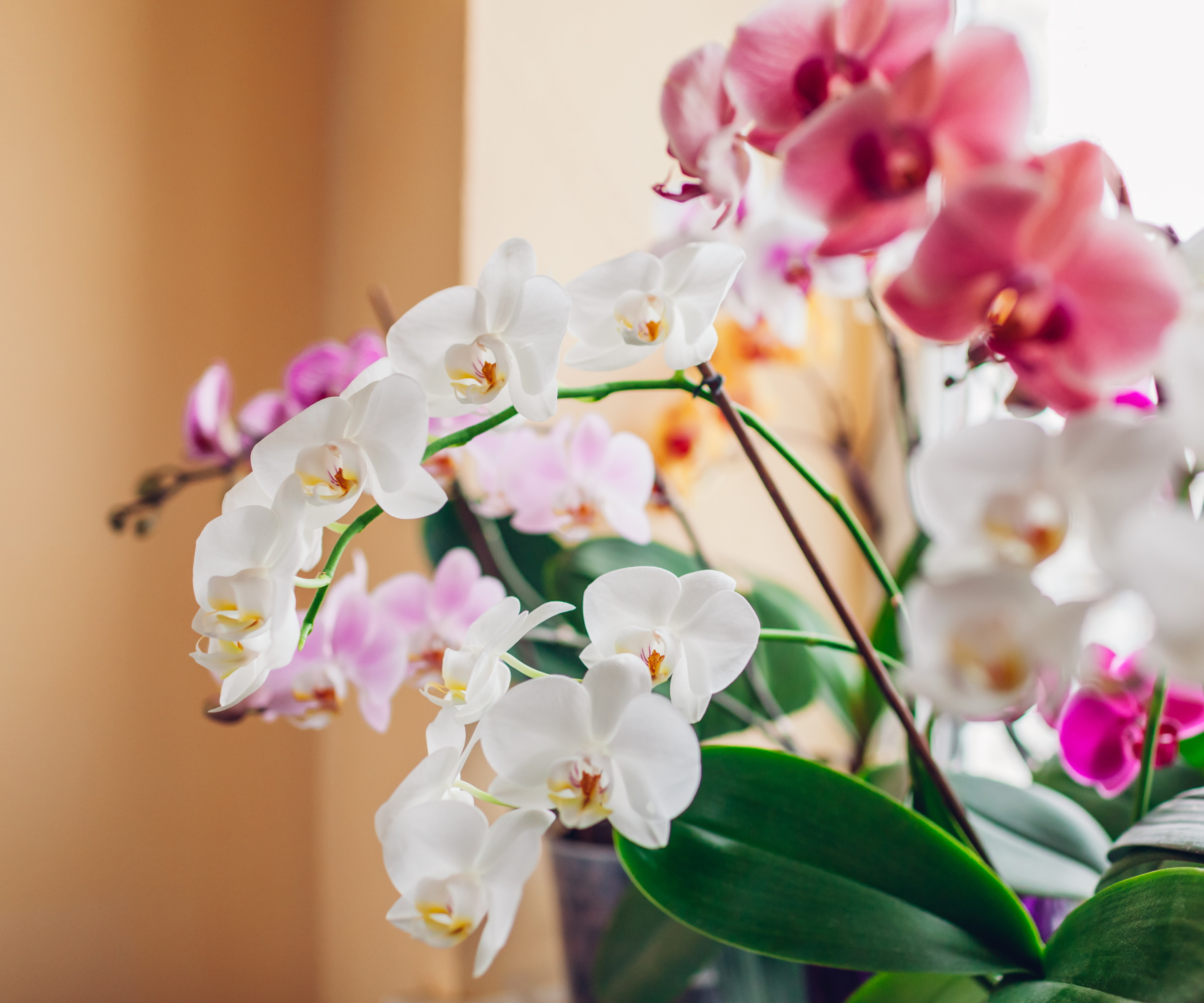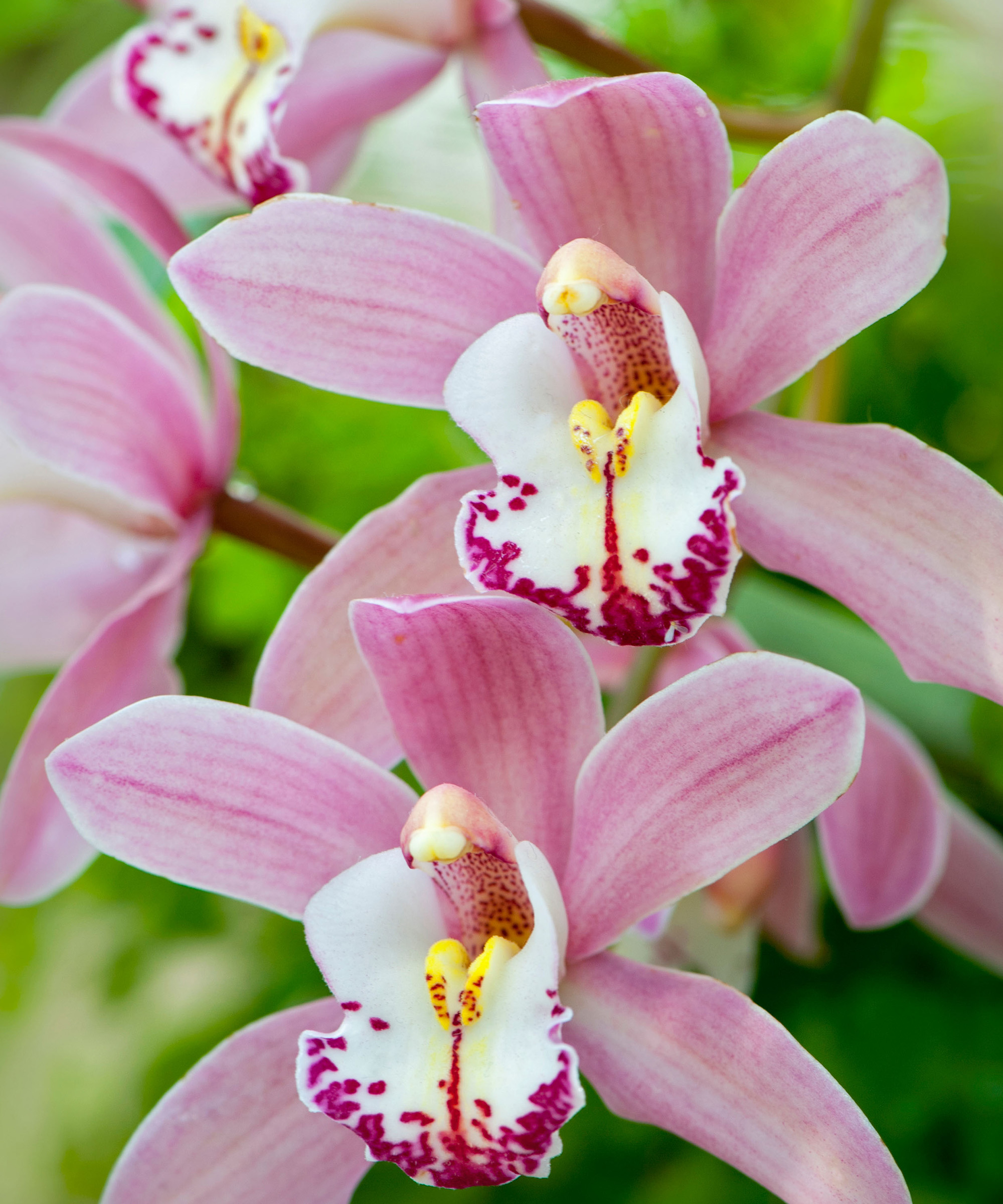
Orchid care is notoriously particular, given the plant's preference for a rigid set of light, humidity, and temperature standards. But once you understand how to water orchids to help your flower thrive, orchids can be quite straightforward to maintain with the correct orchid care and maintenance.
Orchids belong to one of the largest families of flowering plants, a diverse group that runs to 28,000 different types, with new hybrids being bred every year. They are found pretty much everywhere in the world, and come in all shapes and sizes. Some even grow as tall as three metres. But what really distinguishes these tropical indoor plants is, of course, their fantastic flowers.
They come in a huge range of shades from magenta and purple, to yellow and orange, as well as pure white. Some have plain-colored petals while others are splashed or speckled with contrasting colors. With the right care and the plants will last for years. Just remember a few key pointers: they like to grow in bright light, love humidity and hate being overwatered. Here's how to water orchids for beautiful blooms every year.

3 key steps to remember when watering orchids
There was a time, not that long ago, when orchids were grown only by specialist nurseries, to be sold at high prices and mainly to collectors who would show off their exotic blooms to anyone they wished to impress.
The advent of micropropagation techniques changed all this and made it possible to produce some species of orchids cheaply and in large quantities. But if there is one element of orchid care that you need to perfect, it is how to water orchids correctly. If you find your orchid wilting, it could be due to incorrect watering.
1. Plunge orchids in water once a week

The best way to water an orchid is not to simply pour water into the top of its pot, but rather to give it a 'weekly plunge into room-temperature water', advises Gail Pabst, marketing director for the National Garden Bureau.
Then lift up the pot and let any excess water drain out through the holes in the bottom of the pot.
Once it’s well drained, place it on a saucer of gravel. This will help air circulate around it and make sure any unwanted water drains away.
'The amount of water your orchid needs can change depending on the season,' explains Gail. 'The best way to check the watering requirement is by looking at the roots. Roots that are getting enough water are green. Brown and mushy roots are getting too much water and grayish-white roots need more water. If you have air roots, that is a good sign that your plant is actively growing.'
Watering once a week is usually sufficient. In very hot weather, you can switch this up to every three days. In winter, water no more than once every two to three weeks.
2. Water orchids using ice cubes

An effective way to water orchids is to place three ice cubes on the soil and leave them to melt to provide hydration, says Gail.
'Research from Ohio State University and published on the American Society for Horticulture Science both found that this method works and does not harm the orchid plant,' she says. The ice cube temperature will not affect the orchid, and it is an easy way to monitor how much water you are giving your plant.
3. Maintain humidity levels by misting or using a tray

'Orchids love humid conditions,' says Rachel Bull, head of gardens at Homes & Gardens. 'I've recently spent time in Singapore learning about native planting and urban greening efforts in the country, and I saw the biggest, most floriferous orchids I'd ever seen in my life. Orchids are Singapore's national flower, and conditions in the country are simply perfect for these elegant plants.
'As most of us will live in a less humid country, it's vital to create those warm and humid conditions to help your orchid to grow and bloom beautifully,' continues Rachel. 'You can of course mist your orchids daily, with a mister bottle such as this gorgeous green one from Amazon, but according to some of the orchid specialists I spoke to in Singapore, a better and easier way would be to place your orchid pot on a tray filled with gravel and water. This set up will provide humidity without the need for daily misting from you.'
Humidity trays, such as this one from Amazon, are ideal for the job, and look elegant in the home, too.
2 common orchid watering mistakes

Over and underwatering accounts for more orchid deaths than any other single factor, and the matter is made worse if you correct one by doing the other.
Knowing when and how to water orchids is one of the more difficult aspects of orchid care to master. Here's what to avoid when it comes to watering orchids:
- Watering too much and too often: Orchids should never be allowed to sit in water for long periods of time. They strongly dislike having wet feet, so do not leave them in standing water. In fact, the plant should be dry before watering.
- Watering at night: This might sound bizarre but no matter what kind of orchid you grow, always water in the morning - orchids should always be dry at night. Night-time watering allows water to stagnate. This will encourage unwanted bacterial and fungal diseases to develop and could also lead to orchid root rot.
Shop orchid watering and care kit
This 200ml vintage spray bottle is a pretty accessory to keep to hand so that your misting routine happens without a second thought (without ruining your aesthetic).
The reviews for this slow-release orchid fertilizer and impressive, with many people citing how easy they are to use and that they've seen amazing results.
Orchids do best when their roots have air to circulate, and this beautiful 6-inch pot designed specifically is perfect.
FAQs
Should I water my orchid with rainwater?
According to Gail Pabst, marketing director for the National Garden Bureau, the only recommendation is not to use salt-softened or distilled water for your orchids. 'Rainwater vs tap water doesn't matter,' she says.
How do you know when an orchid needs water?
Identifying over- and under-watered orchids is all about looking for signs. Your orchid will give you clues if it's happy with your watering routine, the biggest being healthy-looking green roots. It will also signal if your watering routine is over-zealous (brown roots). However, you can easily tell if it needs water if the roots are gray or white root, or simply by poking your finger into the potting mix. If it's as dry as a bone, the orchid needs watering. In the meantime, look to mist it daily, especially in hot, dry conditions.
As a general guide, if the leaves are green, your orchid is happy. If they are silver or white, they could do with a drink, especially if slightly wrinkled. If they’re brown, this could be a sign of overwatering.
You can prune orchids to remove any of the dead or decaying leaves, to allow the plant's energy to be directed to producing healthy foliage and flowers. And don't worry if you haven't seen flowers on your orchid for years, as we have an expert advice on how to bring one back to life.







